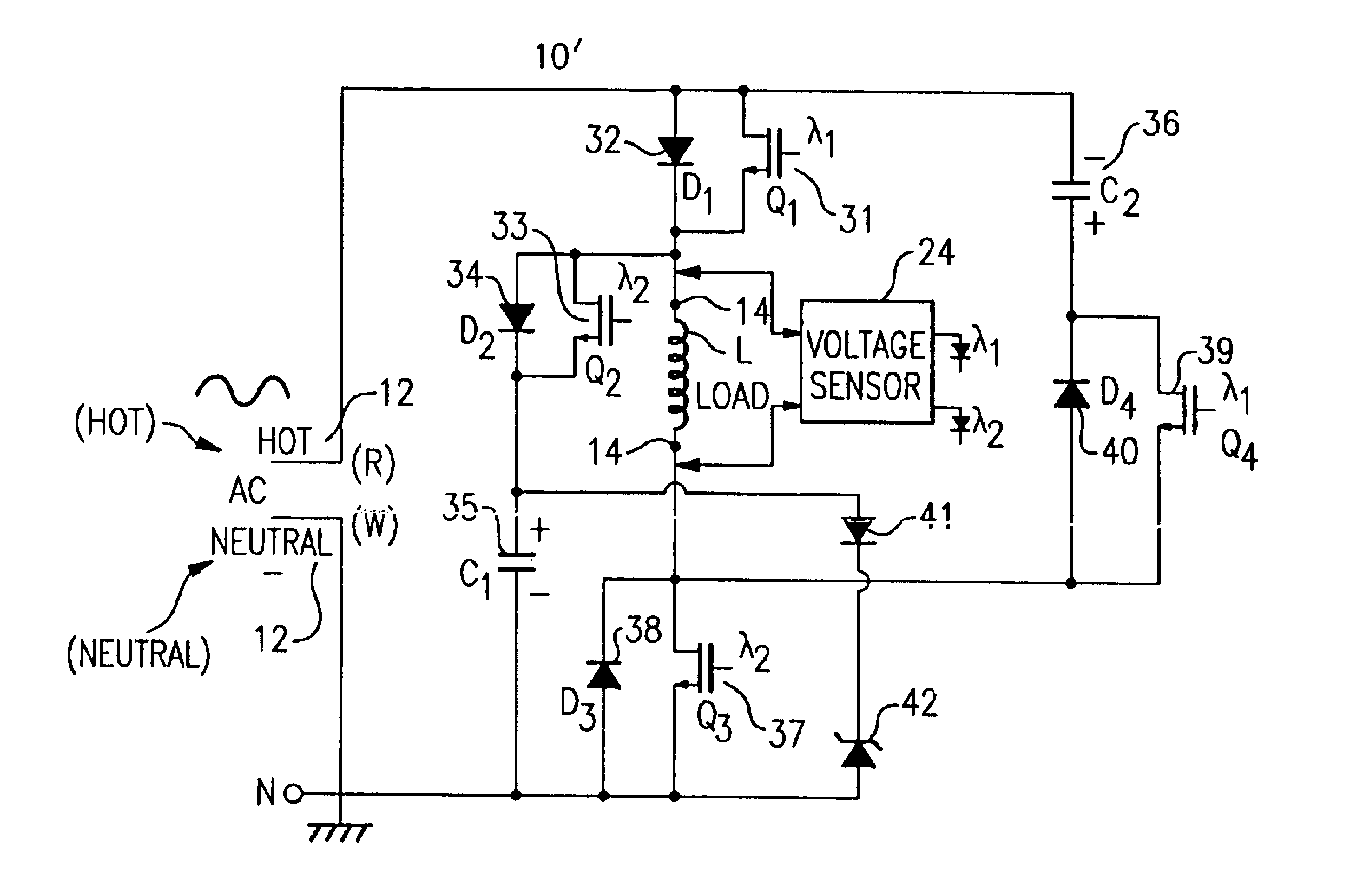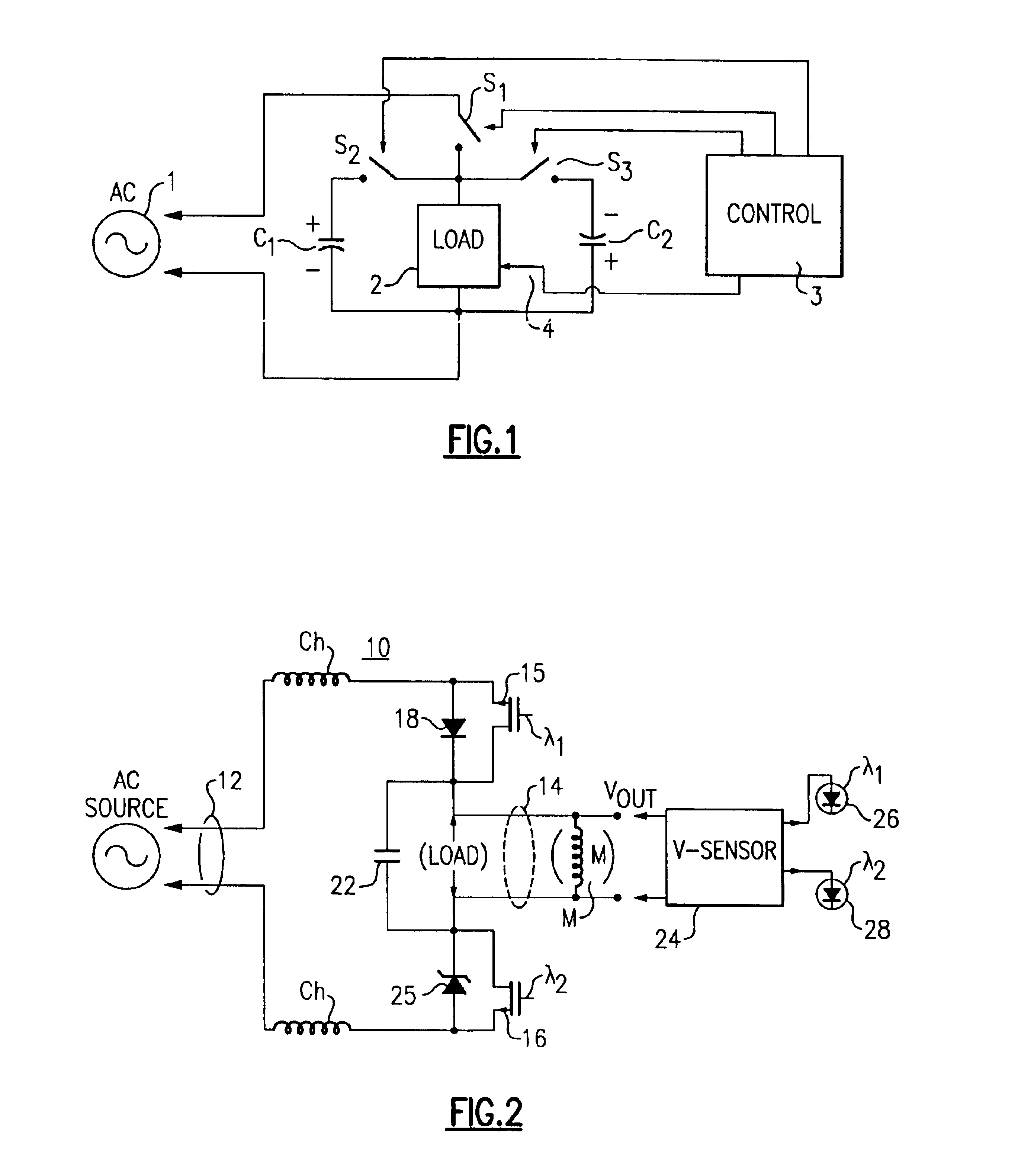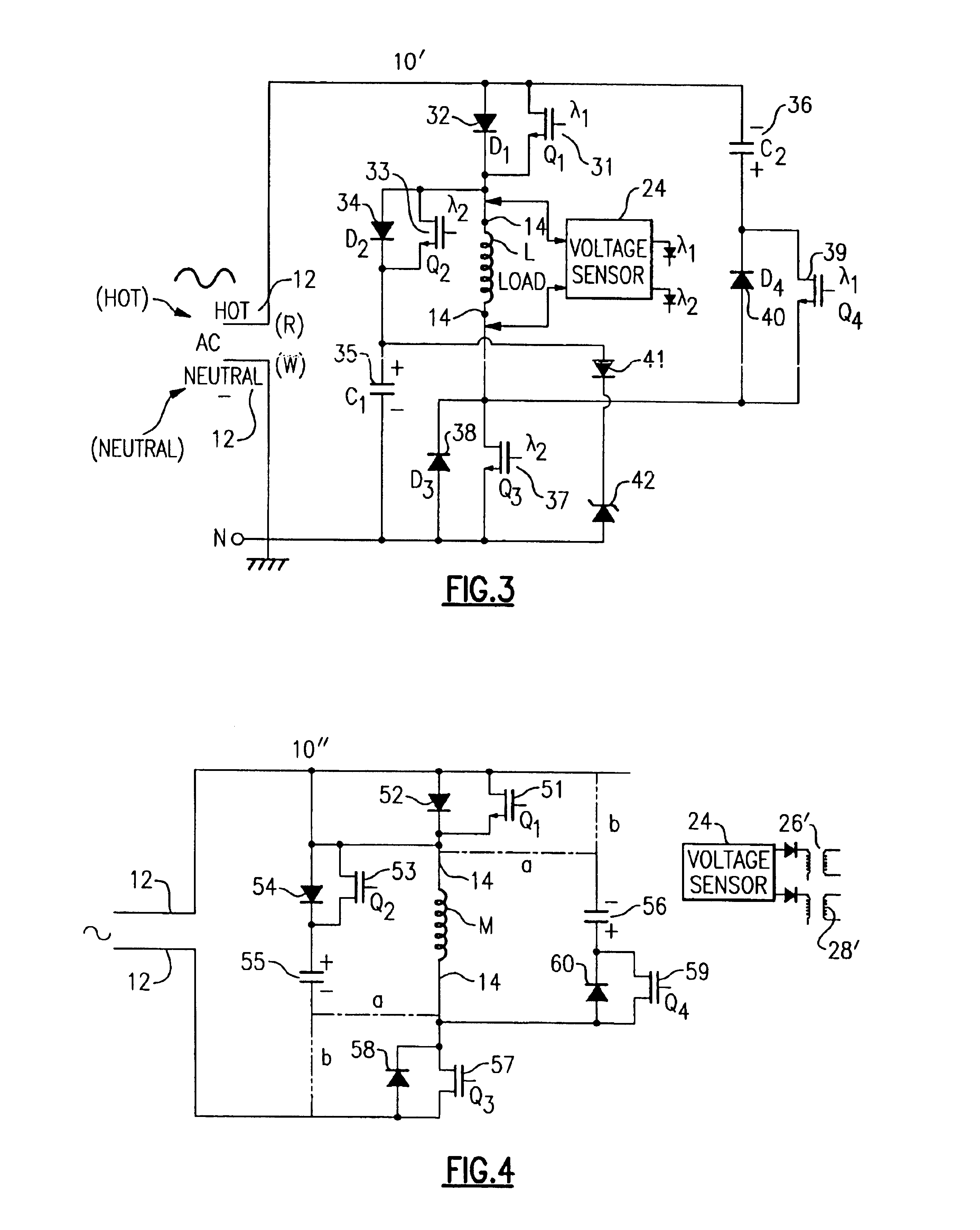Universal energy regulating controller circuit
a controller circuit and energy regulation technology, applied in the direction of motor/generator/converter stopper, electric motor speed/torque regulation, dynamo-electric converter control, etc., can solve the problem of system over-design, motor over-design, and actual applied voltage, i.e., the real component of the complex ac voltag
- Summary
- Abstract
- Description
- Claims
- Application Information
AI Technical Summary
Benefits of technology
Problems solved by technology
Method used
Image
Examples
Embodiment Construction
With reference to the Drawing, FIG. 1 is a basic schematic view of a circuit employing the general concepts of this invention, and receiving AC power from a source 1 and applying it to a load 2. A first controlled switch S1 is interposed between the source and the load 2, and there are also second and third controlled switches S2 and S3 that are selectively opened and closed for charging first and second capacitors C1 and C2. A control circuit 3 applies switching signals to the controlled switches S1, S2, and S3, and may have a sensor input 4 coupled to the load 2.
With this arrangement, the capacitors C1 and C2 can be kept charged up to peak AC voltage, which is typically about 40% higher than the average or RMS line voltage value. The line voltage can be switched on or off to the load 2 as needed, by opening and closing the switch S1, and the stored charge can be applied from the capacitors C1 and C2 to the load 2 by selectively opening and closing the switches S2 and S3. In practi...
PUM
 Login to View More
Login to View More Abstract
Description
Claims
Application Information
 Login to View More
Login to View More - R&D
- Intellectual Property
- Life Sciences
- Materials
- Tech Scout
- Unparalleled Data Quality
- Higher Quality Content
- 60% Fewer Hallucinations
Browse by: Latest US Patents, China's latest patents, Technical Efficacy Thesaurus, Application Domain, Technology Topic, Popular Technical Reports.
© 2025 PatSnap. All rights reserved.Legal|Privacy policy|Modern Slavery Act Transparency Statement|Sitemap|About US| Contact US: help@patsnap.com



